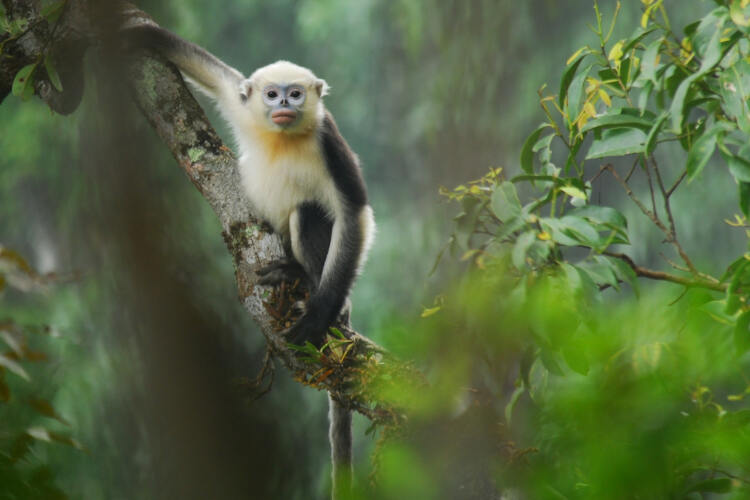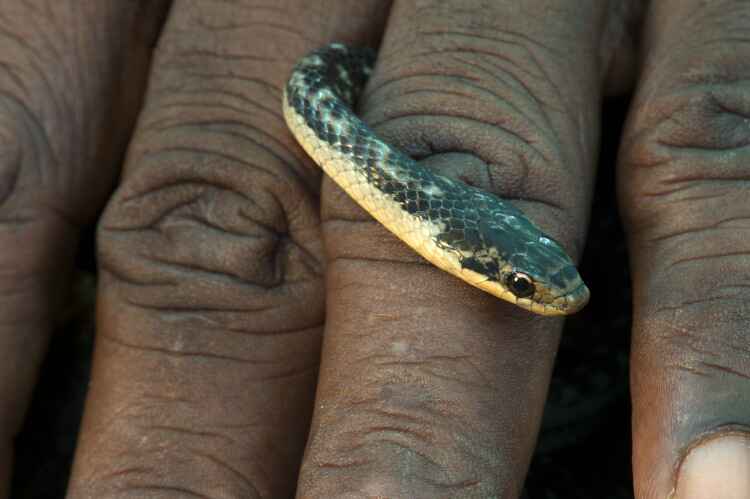
Flora and Fauna International (FFI) reveals 10 endangered species in critical need of protection in 2023, and the work being done to save them
Saint Lucia racer snake

The world’s rarest snake was believed to be extinct up until 1973. Today, the Saint Lucia racer’s global population is thought to be as low as 20. Once the most common snake on the island of Saint Lucia, it was almost wiped out by the arrival of the Asian mongoose, introduced in the late 19th century. The remaining population is confined to a tiny, predator-free offshore islet where, less than one kilometre from the mainland, this critically endangered species remains at risk from invasive species such as rats. With the creation of a new snake sanctuary on mainland Saint Lucia, which will be populated via an ambitious captive-breeding programme, FFI hopes to increase the world population to 500 by 2025.
Menzbier’s marmot

The Menzbier’s marmot lives in the high altitude environment of the Western Tien-Shan mountains in Central Asia, where it is endemic to the meadows and steppes. It is vulnerable to habitat loss, caused by expanding agricultural land, and its population has declined considerably. However, the most recent survey conducted by FFI and partners revealed that the Kyrgyzstan population of Menzbier’s marmot has increased to over 16,000, a 30 per cent rise in two years, as a result of improved protection measures in the Besh-Aral State Nature Reserve. Predators like bears, wolves, lynx, golden eagles and bearded vultures have also been seen in the area, suggesting the growing number of marmots is having a positive impact for other species too.
Goliath frog

This giant of a frog can weigh over three kilograms but, despite its size, its population and range are shrinking as a result of hunting and habitat destruction. In collaboration with conservationists in southwestern Cameroon, where the goliath frog is endemic, FFI will be working with local communities to help them understand the need to protect this endangered species, and encouraging them to participate in citizen science reporting.
African pangolin

The pangolin has the unenviable title of the world’s most trafficked mammal; it’s increasingly threatened by the illegal wildlife trade which prizes its unique scales – used in traditional medicine. One way to keep tabs on their dwindling numbers is to tag and tack them. A pilot project to track African white-bellied and black-bellied pangolins is now underway in Guinea, where conservationists hope the project will provide valuable insight into the little-understood movements and activities of these endangered animals.
Lemon shark

This sociable shark thrives in tropical mangrove ecosystems, such as the forests off the coast of Cabo Verde. These waters are a crucial refuge and breeding spot for the lemon shark, sheltering juveniles from predators. Two major threats to these sharks are fishing – they are often caught as bycatch – and the removal of mangroves, which support many other species, to make way for coastal development and aquaculture. Along with local conservation groups, FFI has been gathering shark-related data to help identify nurseries, shape local conservation initiatives and plan for protected areas.
Tonkin snub-nosed monkey

The Tonkin snub-nosed monkey is one of the most endangered primates on the planet and is found only in northern Vietnam. Around 20 monkeys are thought to live in the Tung Vai forest, one of only two known viable populations of this critically endangered species. As with many other primates, its primary threats are hunting – for bushmeat and medicine – and habitat loss. This year, in a bid to increase its population, FFI and local experts plan to search and track them in this 3,000-hectare forest using drones and thermal cameras.
Okapi

Despite its looks, this striped animal is more closely related to a giraffe than a zebra. It lives in the Ituri Rainforest in the northeast of the Democratic Republic of Congo, where human activities such as illegal logging and mining are its biggest threats. It’s not clear how many remain in the wild, but it’s thought that its population has halved in the last three decades. To get a better idea of how best to safeguard the unusual species, FFI are using camera traps to study and monitor individuals in their forest home.
Red bird of paradise

Of the 38 species in the Bird of Paradise family, the red bird of paradise (Paradisaea rubra) is one of the most spectacular. It has a small range, found only on the islands of Batanta, Waigeo and Gam in Indonesia. They perform an important role in the forests as seed-dispersers, and a number of fruit trees on the islands rely on them for survival. However, their beautiful feathers make them a target for illegal capture and trade, while deforestation is eating into their range. To help support the species, FFI are mapping their distribution on Waigeo island and working with communities to reduce the threats posed by illegal activities.
Caribbean diamond tarantula

As you might expect from its name, the Caribbean diamond tarantula is found nowhere else on the planet. It lives in the dry forest of Chatham Bay on Reunion Island, one of the very few undisturbed dry forests in the Caribbean – most of these unique habitats are endangered. The survival of the Caribbean diamond hinges on the preservation of its native forest, which conservationists are continuing to patrol and protect.
Indochinese tiger

This endangered species of tiger is in urgent need of protection. By 2020, the number of Indochinese tigers had fallen by more than 80 per cent in little more than a decade. Just 221 individuals are estimated to remain in Thailand and Myanmar. FFI says it is working with communities around the lowland forests of southern Myanmar, home to its largest remaining tiger population, to protect the Indochinese tiger, its prey and a crucial forest breeding site.
Fauna & Flora International (FFI) is a wildlife conservation charity working to protect endangered species and ecosystems in more than 40 countries worldwide.




